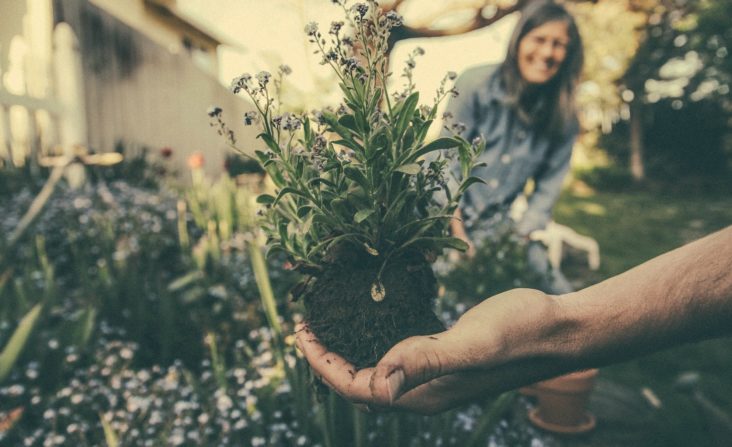Root rot is a serious problem many gardeners face. While it can affect any type of plant, the majority of cases come from plants grown in containers. This makes it something that is of great concern for any indoor or container gardener. Let’s take a look at what root rot actually is, how to identify plants suffering from it, and how to prevent it from happening in the first place.
What Is Root Rot?
Root rot, at its core, is a fungal disease that attacks the roots of plants. This eventually will kill the roots of the plants affected by the disease, which in turn will prevent your plant from getting the nutrients it needs. It can also refer to the condition a plant experiences when habitually overwatered. A perpetually waterlogged plant will often develop root rot as well.
Ultimately, root rot will often lead to the death of the plant, and if left unchecked can spread to other nearby plants. This is why it’s important to be aware of the signs, and take action if you suspect your plants are suffering from the disease.
What Causes Root Rot?
As noted, root rot is caused by a fungus, but it’s a particular environment that the fungus can grow in that is of concern. The fungus that causes the disease grows best in wet soil. This means overwatering and poorly draining soil. In general, if you’re leaving your roots too wet, your plants are at risk for root rot. When properly watered and drained, soil will not be the right condition for the fungus to take hold.
It’s also caused by having soil that is constantly overwatered or that has poor drainage. This interferes with the aeration of the roots and prevents them from getting the nutrients they need.
At the core of both of these is overwatering. Root rot is almost always seen in soil that is not draining properly and/or getting too much water. Having good watering habits is key to preventing root rot.
How To Identify Plants Affected By Root Rot?
The best way is to simply look at the roots. This will not only give you definitive proof, but is also where the first signs of the disease will appear. Normal roots are firm and white, while those with root rot are mushy and brown. This is what dead roots look like, and is a sign of the rot.
Looking at the roots however is not always possible. In that case, plants with root rot will typically start to show other signs of stress like yellowing or wilting leaves. Root rot is slowly killing the plant, so the signs will quickly be apparent. The difficulty here is distinguishing root rot from other issues like too much sun or even underwatering. If you feel you’re doing everything correctly but the plant still looks unhealthy it may be root rot. In these cases, it may be possible to pull up a small portion of the root system and check for the disease.
How To Prevent Root Rot?
As noted above, you’ll want to make sure that your plant’s roots are not sitting in water. This means having well draining soil, as well as using containers that have proper drainage holes. Pots without drainage holes tend to hold too much water, and this directly leads to root rot.
If you are using a container without great drainage consider adding a few inches of rocks or gravel to the bottom of the container. This will give the water a place to collect away from the roots.
It’s also important to switch out your soil in containers from time to time. Over time, soil will eventually compress, which impacts the drainability of the soil. Generally, once a year is enough to prevent the adverse effects.
Can You Save a Plant Affected by Root Rot?
It really depends on how far progressed the disease is. If you catch it early enough, then yes, it is possible. You’ll want to start by removing the plant from the container, and then clipping off the dead roots with a pair of scissors. Do this under running water to minimize the damage to the healthy roots.
Once all the dead roots are removed, you’re free to replant the plant and continue to care for it. Make sure to swap out the soil and thoroughly rinse the container if using the same one to prevent and lingering disease.
There are also herbicides specifically targeted at root rot. These can be effective, but often times must be used before the disease has become too advanced.
Once that’s all done, make sure to figure out how the plant got root rot in the first place to prevent it from recurring. Generally this involves being more careful with watering habits, or switching to a better draining container. Clay pots, for example, are a good choice as they naturally whisk away water making overwatering more difficult.
While root rot is certainly a serious problem, it’s luckily one that can be easily avoided with simple care. Proper watering technique is essential to keeping your plants healthy, and free of this killer disease.







